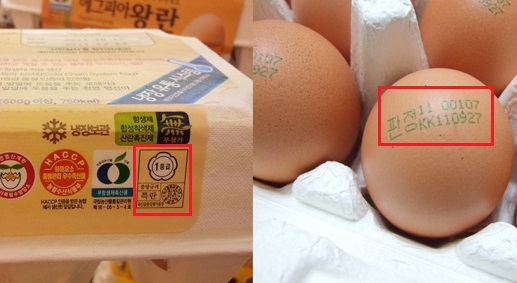
“Milk and Beef:
Effective Usage of Grading System?”
In case of milk, milk company have actively used quality marketing strategy since late 90s. Nowadays, most of the milk products in the market are using 1A grade milk. In the past, some cheese, butter, and flavored milk used 2~3 grade milk, but as the advertisement between the companies goes competitive, the usage of 2~3 grade milk became rare. Korean beef can be also treated as the effective grading system. Specific grading like “1++A” gives the consumer exact information about beef’s quality. In cases of beef and milk, food grading system enhanced the competitiveness of domestic products compared to imported goods, strengthening the quality of domestic products.
However, there exists some blind spots that suppress additional development. Fat inside the muscle, so called 'marbling', takes the biggest part in the beef’s grading system. If the beef has more marbling, the beef gets higher grade. Moreover, when farmer makes 1++ grade beef, it takes a special period of 6 to 8 months, giving cows excessive amounts of corns and grasses, so that the cows will gain its fat inside the muscles. Marbling improves the taste of beef, but also increases fat. We have to consider whether the current marbling grading system gives the optimal information to customers about beef’s quality.
“Rice and Egg:
The Meaningless Grading System!”
There are three grades for rice. Excellent: Almost every rice brand selling in the market gets grade excellent. Good: Used in making triangular gimbob and packed meal. Fair: It is not fair enough for family use. It actually fits “Bad” grade instead of fair. Even though 20% of total rice is crushed, it can still receive “Fair”. They usually processed at factory, and make other products.
For eggs, the situation gets worse. According to the Livestock Circulation Information Center, over 99% of the total examined eggs in 2014 got the grade class 1 and 1+.
However, unlike pork and beef, eggs and rice are not subject to a grade examination. A manufacturer can mark “untested” without examinations. They send only high-quality eggs to the examination that deserve class 1, and that’s why the 99% of the eggs are graded over class 1, and 93.6% of total eggs and 71.7% of rice (2014) in the market were not subject to examination. Current grading is not helpful anymore since the 93.6% of eggs are not untested. The examination should be done for all products to increase the transparency, and the grades should be specified so that customers can distinguish the difference at a glance. Grading systems are built in a desirable purpose: Give customers the brief and specific information so that they can rationally extend their choice. Nevertheless, some systems have serious defection that hinders transparency of market. With sustaining feedbacks, active system development collecting the opinions of both experts and farmers is strongly needed.
м Җмһ‘к¶Ңмһҗ © нҸ¬н•ӯкіөлҢҖмӢ л¬ё л¬ҙлӢЁм „мһ¬ л°Ҹ мһ¬л°°нҸ¬ кёҲм§Җ


